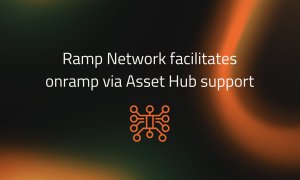ASIC adopts more rigorous enforcement approach
ASIC is accelerating court-based enforcement outcomes driven by its new enforcement strategy, a “why not litigate?” stance.

The Australian Securities and Investments Commission (ASIC) is taking on a new, tougher enforcement approach, as indicated by ASIC’s Commissioner John Price‘s comments delivered at the Governance and Risk Management Forum in Melbourne today.
Mr Price noted that ASIC started its strategic program of change in 2018 to strengthen governance and culture and to realign priorities. As part of this change program, the regulator has implemented some new supervisory approaches and changed its approach to enforcement.
ASIC is significantly increasing and accelerating court-based enforcement outcomes driven by its new enforcement strategy, a “why not litigate?” stance, and it is looking to use the full extent of its new penalties and powers.
This means that if ASIC is satisfied that breaches of the law are more likely than not, and it is evident from the facts of the case that the pursuit of the matter would be in the public interest,
then the regulator will actively ask itself: why not litigate this matter?
A “why not litigate?” strategy represents a rigorous approach to deciding which tool is the right one, bearing in mind:
- the need to deter future misconduct, and
- community expectations that wrongdoing be pursued and punished through the courts.
Mr Price said accelerated action can already be seen. For instance, from February 2018 to March 2019:
- there has been a 15% increase in the number of ASIC enforcement investigations;
- a 65% increase in enforcement investigations involving large financial firms (or their officers or subsidiary companies), and
- a 129% increase in wealth management investigations.
Further, ASIC is also working on implementing the Government’s package of reforms and its new obligations and responsibilities in response to the Royal Commission. This includes two key measures for enhanced consumer and retail investor protection:
- a design and distribution obligation for financial services firms; and
- a product intervention power for ASIC.
Let’s recall what the design and distribution obligations in relation to financial products are. These new obligations aim to improve consumer outcomes by ensuring that financial services providers appropriately promote the provision of suitable financial products to consumers of those products.
The design obligations are:
- to make a target market determination in relation to the product;
- to review the target market determination as required to ensure it remains appropriate;
- keep records of the person’s decisions in relation to the new regime; and
- to notify ASIC of any significant dealings in a product that are not consistent with the product’s target market determination.
The distribution obligations include requirements:
- not to deal, or provide financial product advice, in relation to a product unless a target market determination has been made;
- not to deal, or provide financial product advice, where a target market determination may no longer be appropriate;
- to take reasonable steps to ensure that products are distributed in accordance with the target market determination;
- to collect information related to the distribution of a product; and
- to notify the issuer of a product of any significant dealings in the product that are not consistent with the products target market determination.
In addition, the new law amends the Corporations Act to require advertising or other promotional material for a financial product to refer to the product’s target market.
The new law also permits ASIC to make a stop order with respect to certain contraventions of the new regime.









